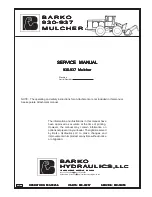
Contents
viii
TSQ Altis, Quantis, and Fortis Hardware Manual
Thermo Scientific
Controls and Indicators . . . . . . . . . . . . . . . . . . . . . . . . . . . . . . . . . . . . . . . . . . . . . . . .25
LEDs. . . . . . . . . . . . . . . . . . . . . . . . . . . . . . . . . . . . . . . . . . . . . . . . . . . . . . . . . 25
Power Entry Module . . . . . . . . . . . . . . . . . . . . . . . . . . . . . . . . . . . . . . . . . . . . . 26
Communications Panel . . . . . . . . . . . . . . . . . . . . . . . . . . . . . . . . . . . . . . . . . . . 27
Cooling Fans . . . . . . . . . . . . . . . . . . . . . . . . . . . . . . . . . . . . . . . . . . . . . . . . . . . 30
Using the MS Power Options . . . . . . . . . . . . . . . . . . . . . . . . . . . . . . . . . . . . . . . . . . .31
Turning the MS On . . . . . . . . . . . . . . . . . . . . . . . . . . . . . . . . . . . . . . . . . . . . . 31
Placing the MS in Standby Mode . . . . . . . . . . . . . . . . . . . . . . . . . . . . . . . . . . . 31
Shutting Down the MS System in an Emergency . . . . . . . . . . . . . . . . . . . . . . . 32
Shutting the MS System Down Completely . . . . . . . . . . . . . . . . . . . . . . . . . . . . . . .33
Shutting the MS Down Completely . . . . . . . . . . . . . . . . . . . . . . . . . . . . . . . . . 33
Turning off the LC, Gases, Data System, and Autosampler. . . . . . . . . . . . . . . . 34
Restarting the MS System After a Shutdown. . . . . . . . . . . . . . . . . . . . . . . . . . . . . .35
Resetting the Mass Spectrometer . . . . . . . . . . . . . . . . . . . . . . . . . . . . . . . . . . . . 36
Pumping the MS Down . . . . . . . . . . . . . . . . . . . . . . . . . . . . . . . . . . . . . . . . . . 37
Resetting Calibration Parameters. . . . . . . . . . . . . . . . . . . . . . . . . . . . . . . . . . . . 38
Starting the LC, Gases, and Autosampler . . . . . . . . . . . . . . . . . . . . . . . . . . . . . 39
MS Components On/Off Status . . . . . . . . . . . . . . . . . . . . . . . . . . . . . . . . . . . . . . . . . .41
Maintaining the MS on a Daily Basis . . . . . . . . . . . . . . . . . . . . . . . . . . . . . . . . . . . .43
Before Operating the Mass Spectrometer. . . . . . . . . . . . . . . . . . . . . . . . . . . . . . 43
Finding and Fixing Air Leaks. . . . . . . . . . . . . . . . . . . . . . . . . . . . . . . . . . . . . 43
Checking the Vacuum Pressure Levels . . . . . . . . . . . . . . . . . . . . . . . . . . . . . . 44
Checking the Argon and Nitrogen Gas Supplies . . . . . . . . . . . . . . . . . . . . . . 46
Flushing the Inlet Components . . . . . . . . . . . . . . . . . . . . . . . . . . . . . . . . . . . 47
Purging the Oil in the Forepump . . . . . . . . . . . . . . . . . . . . . . . . . . . . . . . . . 48
Emptying the Solvent Waste Container. . . . . . . . . . . . . . . . . . . . . . . . . . . . . 48
Placing the System in Standby Mode. . . . . . . . . . . . . . . . . . . . . . . . . . . . . . . 48
Recommended Inlet and Flow Rates . . . . . . . . . . . . . . . . . . . . . . . . . . . . . . . . . . . . .49
Guidelines for LC/H-ESI/MS Parameters . . . . . . . . . . . . . . . . . . . . . . . . . . . . . 49









































